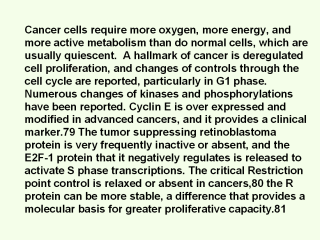 |
Furthermore,
cancer cells are protected from apoptotic activity, due to mutations such as
of p53 or NF-kB. Developments of this enormous subject
are reviewed in ref. 57. Killing cancer cells is easy;
selection is the problem—to kill them but not normal
cells. The discovery of differences of regulation
between normal and cancer cells provides potential targets for
detection, prognosis and therapy. An emergency exit mechanism
that leads to apoptosis may be activated if a normal
cell overexpresses a proliferation-related gene. Such
a mechanism may have become inactive in a cancer,
which might provide the needed difference. Studies of
regulation have practical aspects. Drugs such as
Gleevec, an inhibitor of an over expressed proliferation-related
kinase, are being applied clinically, as are proteasome
inhibitors such as PS341. Many other targeted
applications are under development, of which a
potential anti-cancer therapy initiated in this laboratory
provides an example. b-Lapachone, a natural product,
increases E2F-1,82 decreases ATP and NAD,83 and selectively causes apoptosis
of cancer cells. It is remarkably and specifically
effective against tumors implanted in mice, and is now
in clinical trials. |
